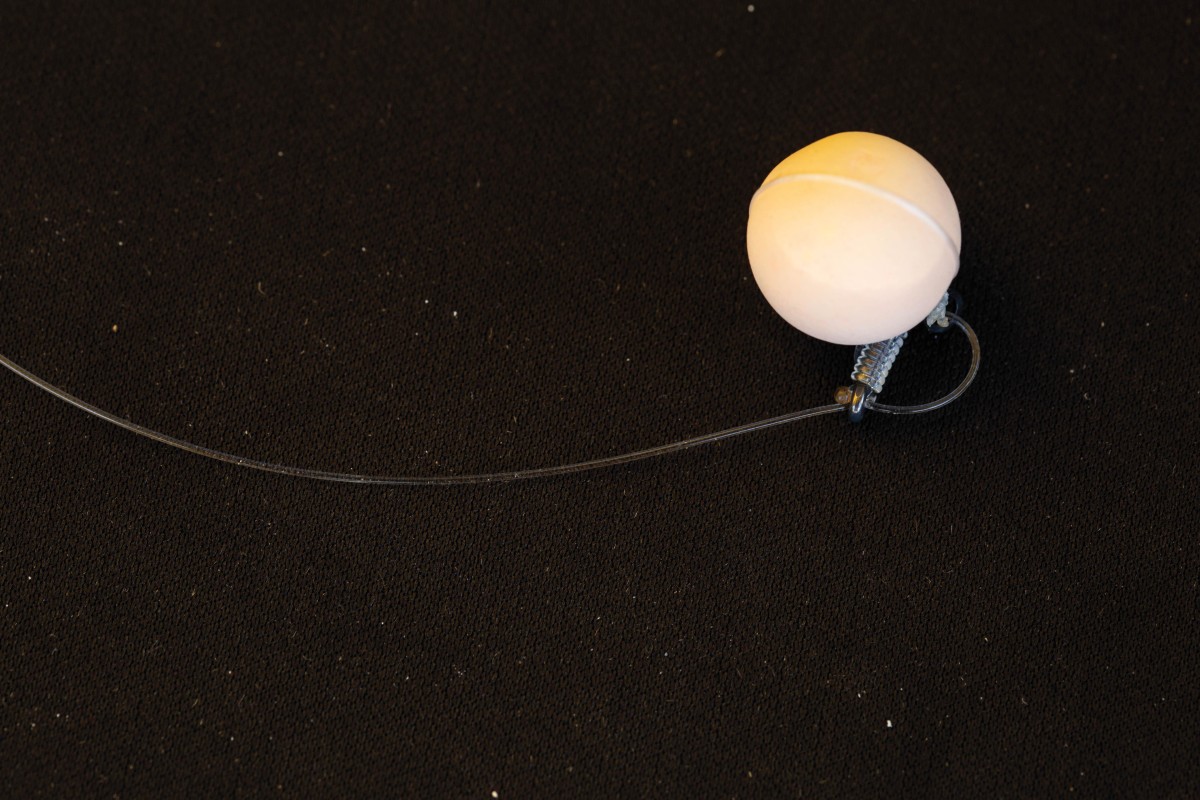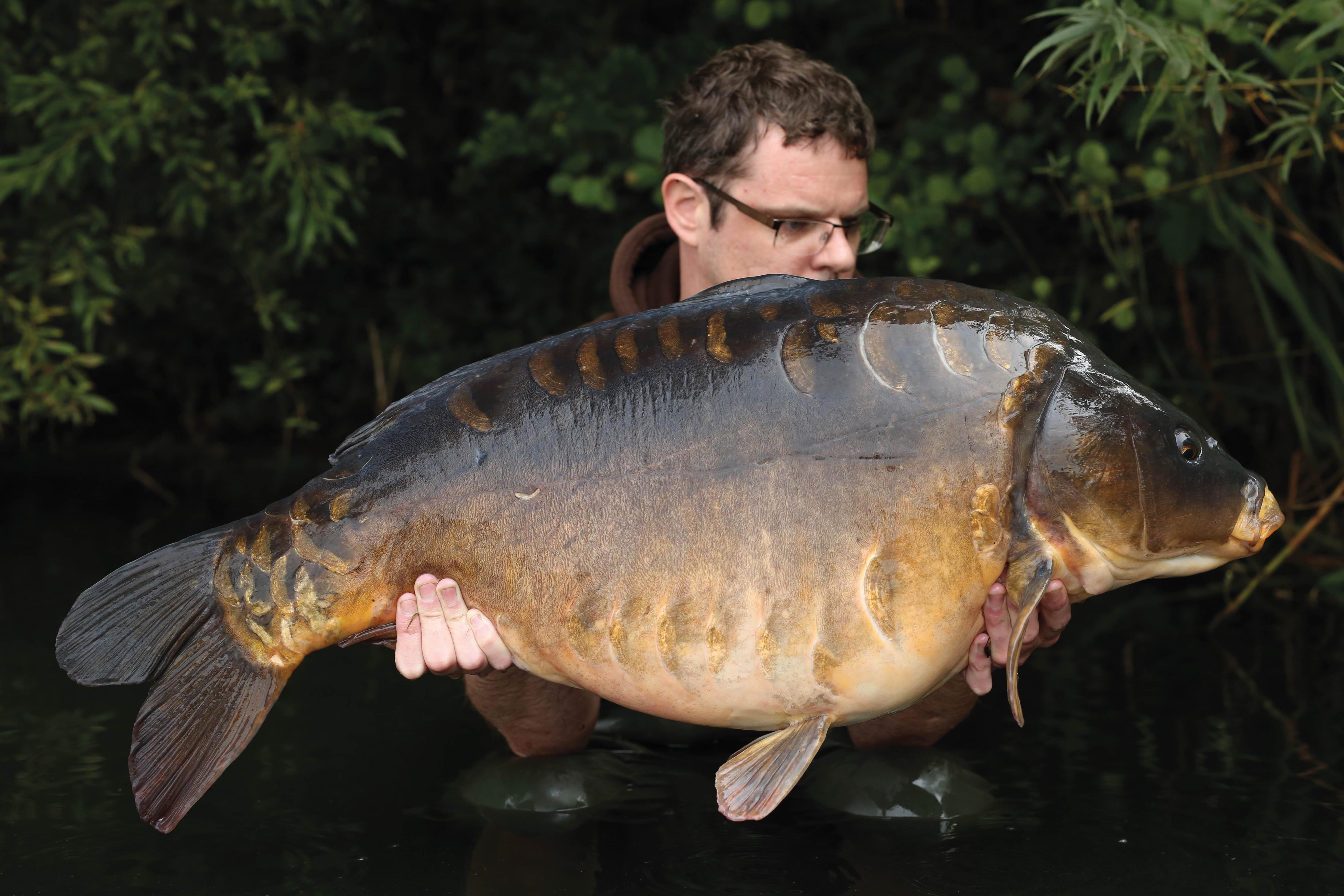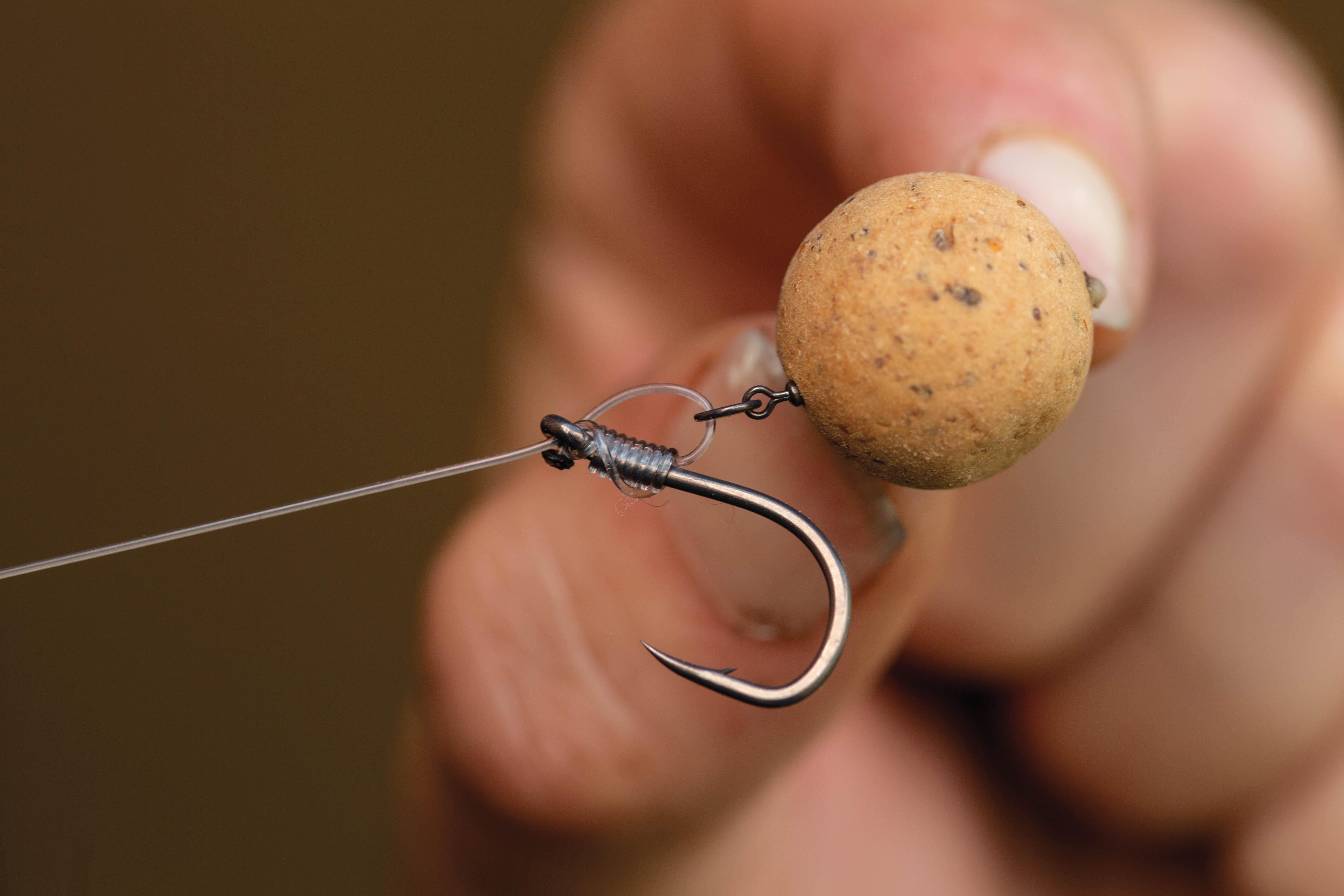
Evolution Of D-Rigs
Scott Karabowicz recalls his first experiences with the Stiff D-Rig, and explains how he’s fine-tuned the set-up
My first experiments with the Stiff D-Rig began back in 2004, when I was fishing a local club lake during the winter. I didn’t know a great deal about the stock at all, but I knew the water had a bit of winter form, and that it held a handful of decent carp up to low thirties for me to go at—unfortunately, it had a large head of bream too. If truth be told, I’d spent several previous winters banging my head, fishing a low-stock, deep pit, as well as a very heavily pressured pond which had almost no winter form at all. The long and the short of it was that I just wanted to try a few things out on an easier winter venue, developing methods which might stand me in good stead on harder lakes further down the line.
I was a big fan of a size 6 out-turned eye-style hook at the time, so I coupled their use with some old-school 20lb black Amnesia, and lovingly rolled some soft ‘wintry’ paste around poly balls for balanced hookbaits.
Much of my fishing was at short-range, with me either wading and placing my rigs underneath the marginal snags, or using dare-devilish, short-range flicks underneath snaggy gaps on the far margins. A jammy capture of a low-twenty common on my very first night saw me keen to get back for another go. After feeding some crumb to the back of the main snags—to a point where I had one of the better mirrors head-and-shouldering excitedly over it—I soon had another trap positioned at my end of the snag, with a trail of crumb leading up to my hookbait. Within an hour, the rod wrapped round, and a big, slate-grey 31lb January mirror—a fish known as Arnie—soon found its way into my net.
Both carp were hooked deeply, the hook positioned centrally in the bottom of the mouth cavity. The rig’s mechanics were clearly effective, but the lifespan of the soft hookbaits left a lot to be desired—although I went on to catch consistently through the rest of the winter, not dropping a single carp after hooking.
I was keen to give the rig a whirl on the ‘head banging’ lake the following spring, and so dropped into the last unfancied spot available one Saturday afternoon in April. I found a close-range gravel slope and pinged out a few baits around the rigs. I was trying out a new nut bait, and had a pot of matching pop-ups—‘frying pan jobs’—in my bucket. After piercing some holes in one side of the bait and loading them with short pieces of 1.2mm lead wire, I tied the floss loop around the hookbait, positioning the knot over the bait’s adjusted centre of gravity. When tied to the rig ring, the hookbait would always cock the right way up, the hook dropping into a hooking position instantly when the hookbait was lifted.
Only half an hour after dark, one of the rods simply tore off, and a very rare, and mint-conditioned carp—whose rather rude name I’ll not repeat—was photographed a short while later. It weighed 26lb, and we had no record of it being caught since it was recorded at 19lb—and looking like death! It was nailed solidly, about two inches back, and as centrally in the bottom of the mouth as a fussy carp angler could wish for.
As it turned out, I actually went elsewhere to angle that season, and that presentation sat patiently on the shelf, so to speak, until the following spring, when I started on the ‘riggy’ club lake.
As it turned out, that spring got off to a flyer. After a costly and impromptu speeding ticket received as a result of an overzealous Friday-evening bomb down to the lake, two bottom-weighted, critically balanced D-Rig singles were dispatched to the last piece of free water—did I say it was busy? The result was a lovely 31lb mirror, nailed in textbook fashion once again. On a water where three or four a season was be deemed to be a successful year for a weekender, I’d managed to snare twelve of the stock, during eleven incredibly busy weekends’ angling. That was all without a single carp falling off. I was clearly on to something, and my confidence was through the roof.

By carefully nipping away at the last piece of lead in the pop-up before pressing it into place inside the hookbait with the scissors, I had the baits uber-critically balanced, with them taking took a few seconds to finally come to rest on the bottom. The only downside of the lead inserts was that come nine o’clock the following morning, the hookbaits had deteriorated into a waterlogged, soggy crumbling mess, having also lost any kind of critical buoyancy. Luckily, though, the bites were coming at eight!
Bottom-weighted pop-ups always served me well when chucking singles at showing fish on the club lake, an extra-rare forty-plus common slipping up after evading capture for three years.
I’m more inclined to fish a larger ‘D’ than I would on a Hinge or Chod Rig pop-up section, as I am a big believer that greater separation between hookbait and hook, along with the free movement afforded by a small loop knot at the swivel end, allows the hook to swing and drop into the ideal hooking position instantly when the hookbait is disturbed.
By the time I’d got to Dinton in later years, I’d done away with the fiddly lead wire, simply using a 6mm drill and appropriately sized ball of tungsten putty pressed into the cavity to counterbalance the pop-up, before tying down the floss loop knot over the putty. This was a very efficient set-up for casting into tiny holes in the weed. Not only would it reset perfectly if disturbed, but it could also be cast all day long without tangling. Additionally, it would take only a matter of seconds to retie a fresh rig and transfer the hookbait to the ‘D’, if the hook happened to be blunted during any weedy ‘thrash-fest’.
Once I started to use Sticky Baits, The Krill wafters made it a simpler affair, with my not having to faff around with putty or lead wire anymore. Although I’ve had good results, and some of my bigger carp on those, I think that the more even distribution of buoyancy on a wafter hookbait has a tendency to make the hookbait move willy-nilly, compared to a base-weighted or ‘cocked’ pop-up. When I’m fishing over a bed of bait, or a pre-baited area, I’m quite happy to chuck a Krill wafter amongst it, but for a single-hookbait opportunist chuck, I can’t help but take the extra care and attention to ‘putty down’ a pop-up instead, preferring the potential edge of fine-tuning and balancing the bait just how I like it.




